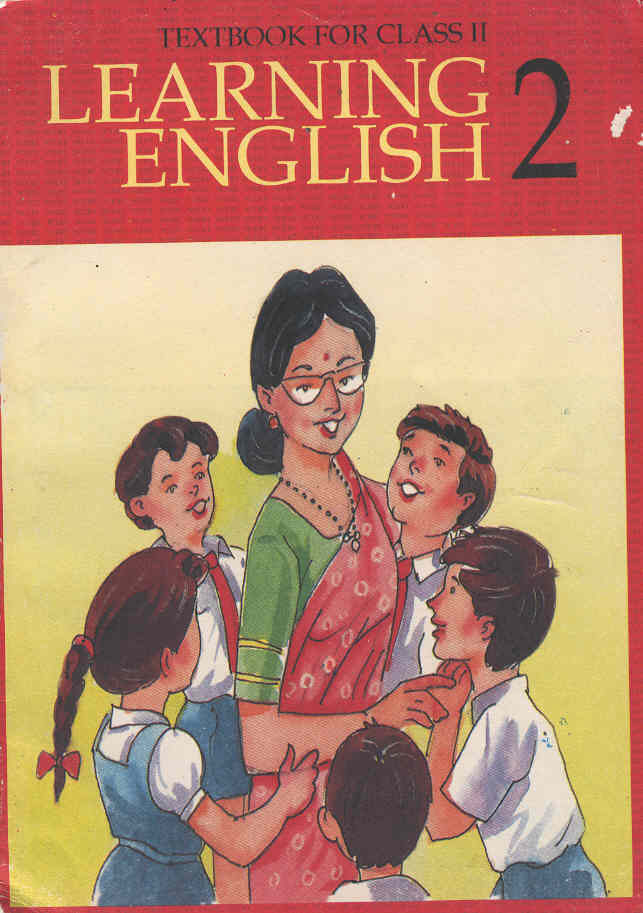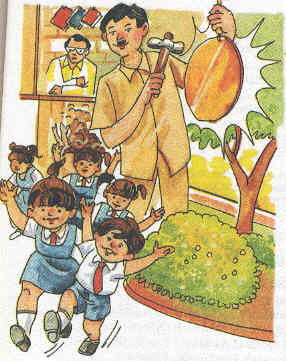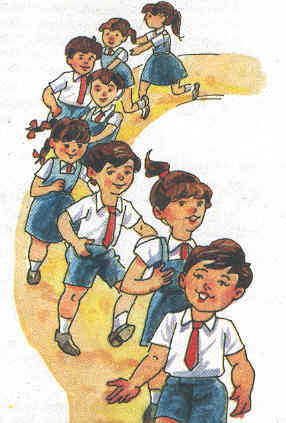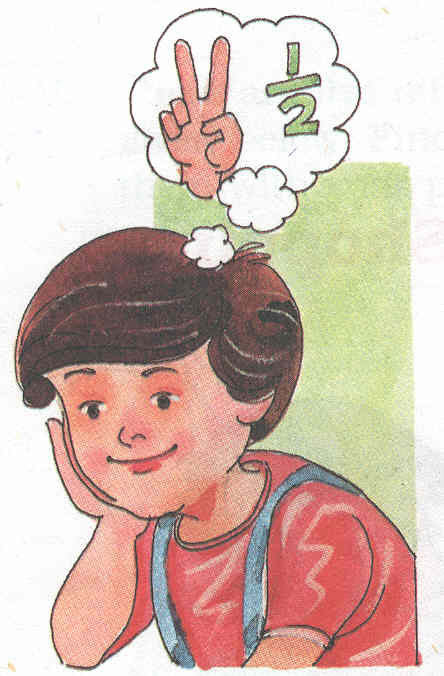THE INTENT OF THIS TEXTBOOK SERIES
In this essay, I will analyze the textbook Textbook For Class II: Learning English 2 by Nasiruddin Khan and Sandhya Rani Sahoo, published by the National Council of Educational Research and Training, New Delhi. This is a textbook written for Indian children to teach them English at school. This apparently is the second book in their series, and I treated it as such. I assumed that much explanation was given regarding various words, prepositions, concepts, etc., in the previous book.
It seems that the book was written with the intent that the teacher would teach orally some of the explanations not included in the textbook. I have evaluated the book on these assumptions. If that were not the case, I would have suggested more explanation of concepts (plural, what the difference between different prepositions is, etc.) to be included in the book. In light of that, I will focus my paper on three areas: aspects of the book that I especially liked, grammatical suggestions, and general suggestions.
The Director of the National Council of Educational Research and Training, New Delhi writes in his Foreword to the series:
Language learning is essentially a master of acquiring the important skills of listening, speaking, reading and writing and harnessing these skills to the performance of formal as well as informal communicative tasks. The emphasis laid acquisition and progressive improvement of language abilities .... is based on sound academic and educational considerations. Learning English [series is] initially for the primary stage of school education. The package for each class consists of a Textbook and a Workbook, designed to facilitate instruction in a manner conducive to a smooth and balanced development of language abilities on the one hand and inculcation of socially and ethically significant attitudes and values on the other. By using these materials, school-children will hopefully find themselves in a position to understand, and suitably respond to, simple spoken English, write with ease correct and meaningful sentences and paragraphs in English and generally read texts in English for knowledge and pleasure.I believe that this is a very laudable goal. However, India being a pluralistic society, one would expect a more pluralistic coverage at least in the use of personal names and episodes presented. Since this is an issue that needs to be considered only by the national Indian educators who might review such textbooks, I will restrict my observations to more tangible issues of grammar, style, vocabulary, exercises, etc.
ASPECTS OF THE TEXTBOOK THAT I LIKED
There were many aspects of this textbook that I liked. Specifically, I enjoyed the following aspects:
- The good use of color. The colorfulness of the book attracts the reader's eye, making it easier to concentrate on the book.
- The selection of pictures. The pictures matched the stories and dialogues well.
- The incorporation of activities. There were often opportunities for the students to color the picture, connect the dots, a maze, etc., such as on pages 10, 15, etc.
- The book has variety. There are a number of different types of exercises such as repeating, writing, fill in the blanks, coloring, etc. This is very good because it keeps the lessons from being predictable and keeps the student's attention better.
- I liked the story about learning languages (Lesson 14) because it encourages the students by sending the message that learning languages is not very difficult.
CHANGES THAT I WOULD SUGGEST
According to the rules of English grammar, I would suggest the following grammatical changes:
- Page 5, 8, etc. - The abbreviation "Mrs." has a period after the m, r, and s. All abbreviations follow this rule.
- Page 5, 8, 10, etc. - The abbreviation "Mr." has a period after the m and r.
- Page 6 - There should be a comma after the sentence "Topsy is white" because it is a conjunctive sentence (two sentences linked by a conjunctive word such as "and" or "but" or "or" or "yet.")
- Page 6 - There should be a comma after the sentence "Topsy is pulling Pussy's tail" because it is a conjunctive sentence.
- Page 13 - There is an unnecessary space in the middle of the page.
- Page 16 - There should be a comma after the word "big" because the word "but" joins the two sentences.
- Page 16 - There should be a comma after the word "tall" because the word "but" joins the two sentences.
- Page 16 - There should be a comma after the word "fat" because the word "but" joins the two sentences.
- Page 17 - There should be a comma after the blank because the word "but" joins the two sentences.
- Pages 20 and 21 - The spacing between sentences is different. Sometimes there is no space between sentences, and sometimes there is a space. It would be better for it to be uniform.
- Page 29 - The spacing between words is different. Sometimes there is no space between sentences, and sometimes there is a space.
- Page 34 - There should be a space between "ringing" and "recess."
- Page 44 - The word "someone" should be capitalized.
- Page 51 - There should be a space between "race" and "Let's."
- Page 55 - There are some spacing oversights on this page.
- Page 63 - A sentence should not start with a conjunction word (such as "and" or "but"), so the sentence should read, "...hungry, and I'm..."
- Page 64 - There should be a comma after the word "me" because the word "and" joins the two sentences.
- Page 65 - There are some spacing oversights on this page.
- Page 92 - A sentence should not start with a conjunction word (such as "and" or "but"), so the sentence should read, "...too, and there..."
- Page 93 - There should be a comma after the word "fields" because the word "and" joins the two sentences.
- Page 93 - A sentence should not start with a conjunction word (such as "and" or "but"), so the sentence should read, "...house, and there..."
- Page 94 - There should be a comma after the word "house" because the word "but" joins the two sentences.
- Page 101 - There are some spacing oversights on this page.
- Page 103 - There are some spacing oversights on this page.
- Page 108 - There are some spacing oversights on this page.
- Page 110 - There are some spacing oversights on this page.
While writing and publishing a textbook, especially for young children who are being exposed to a language other than their own, we should adopt a zero error policy and ensure its implementation. Some of the errors identified may be caused by faulty printing processes, and some others through faulty proof-reading. Yet there may be others caused primarily by the model of the standard English adopted and followed in preparing the textbook.
SOME SUGGESTIONS TO MAKE THE TEXTBOOK EVEN MORE EFFECTIVE
While the textbook is very well written and presented, I would suggest the following to possibly make the book even more effective:
- Some of the words used seem to be a little too advanced for what I would consider second level. For example:
- Page 1, 3, 39, 73 etc. - I would use the word "repeat" instead of "recite."
- Page 12 - I would use the words "baby tree" instead of "sapling." "Sapling" is a very good and precise word, but it could be learned later in a more advanced class. The words "baby" and "tree" are more commonly used in English and therefore might be more useful to learn first.
- Page 7 - The instructions could be a little clearer such as: "Read and then write between the lines." Or, you could give an example, like was well done on page 8.
- Page 8 - I was not clear where one could look to see the answers for the questions in the middle of the page.
- Page 14 - The word more commonly used in the textbooks I have read is "circle," rather than "encircle." Why should we burden the children with cumbersome English, while we can easily adopt simple and plain English?
- Page 17 - The picture of a baby could be of a younger child. In English, the word "baby" usually refers to a child under one year of age.
- There are some words used which are British English. This is just fine, however, I would like to give the American words, in case the publisher would choose to use them. But please ignore this part, if you prefer. Yet please check whether some characteristics of the English spoken by the native speakers could be incorporated to make the style simple and direct.
- Page 18 - Americans would use the word "drinking" instead of "taking."
- Page 26 - Americans would use the word "sign" instead of "notice."
- Pages 27 and 48 - Americans would use the spelling "color," etc. instead of "colour," etc.
- Page 31 - Americans would use the word "owner" instead of "shopkeeper."
- Pages 34 and 35 - Americans would use the word "line" instead of "queue."
- Page 35 - Americans would use the words "next to" instead of "against."
- Page 51 - Americans would use the word "go" instead of "do."
- Page 76 - Americans would use the word "meowed" instead of "mewed."
- Page 111 - Americans would use the word "homework" instead of "school-work."
- Page 25 - I would suggest the wording "...write them next to the appropriate picture" instead.
- Page 38 - I would suggest adding an explanation about the concept of "a" versus "an" to explain when you use which (you use "an" if the next word begins with a vowel).
- Page 53 - This would be especially helpful to explain for the questions asked on this page.
- Page 61 - I think the more common American way of saying it is "three thirty."
- Page 72 - It might be nice to include a little explanation of what the words in the pink box mean.
- Page 89 - The words "behind" and "wind" do not rhyme (in the first word, the "i" is a long "i" sound, and in the second word, it is a short "i" sound).
- I'm sure it is because I am American, but I did not understand the lesson to be learned from the story of Lesson 19. I did not know how to answer question #3 (whether the mouse was wise or foolish).
- I think it is good to warn children that some people are dangerous, but I thought that the story in Lesson 20 was a little too strong. It might be better to have a statement telling children that they should not talk to or follow strangers rather than a long story illustrating it. (This may be a cultural difference, so this is only my opinion!)
- Page 111 - A more natural way to word #7 might be, "Do you listen to the radio or watch television often?"
THEMATIC ARRANGEMENT
Perhaps the textbook could be formatted more thematically. Parts of the textbook already are, but I think that themes such as going to the grocery store, telling time, going to the doctor's office, etc. make the material more relevant to daily experience. The students may then more readily use in everyday life the words they have been learning in class. This would encourage them to continue learning English.
TO CONCLUDE
I thoroughly enjoyed reading this textbook. The writers of the book obviously have a vast knowledge of English and are wonderful at teaching and communicating that knowledge. I hope that the above suggestions and encouragement will help them in their admirable work of teaching English.
REFERENCE
Khan, Nasiruddin and Sandhya Rani Sahoo. Textbook For Class II: Learning English II. New Dehli: National Council of Educational Research and Training, 2001.



